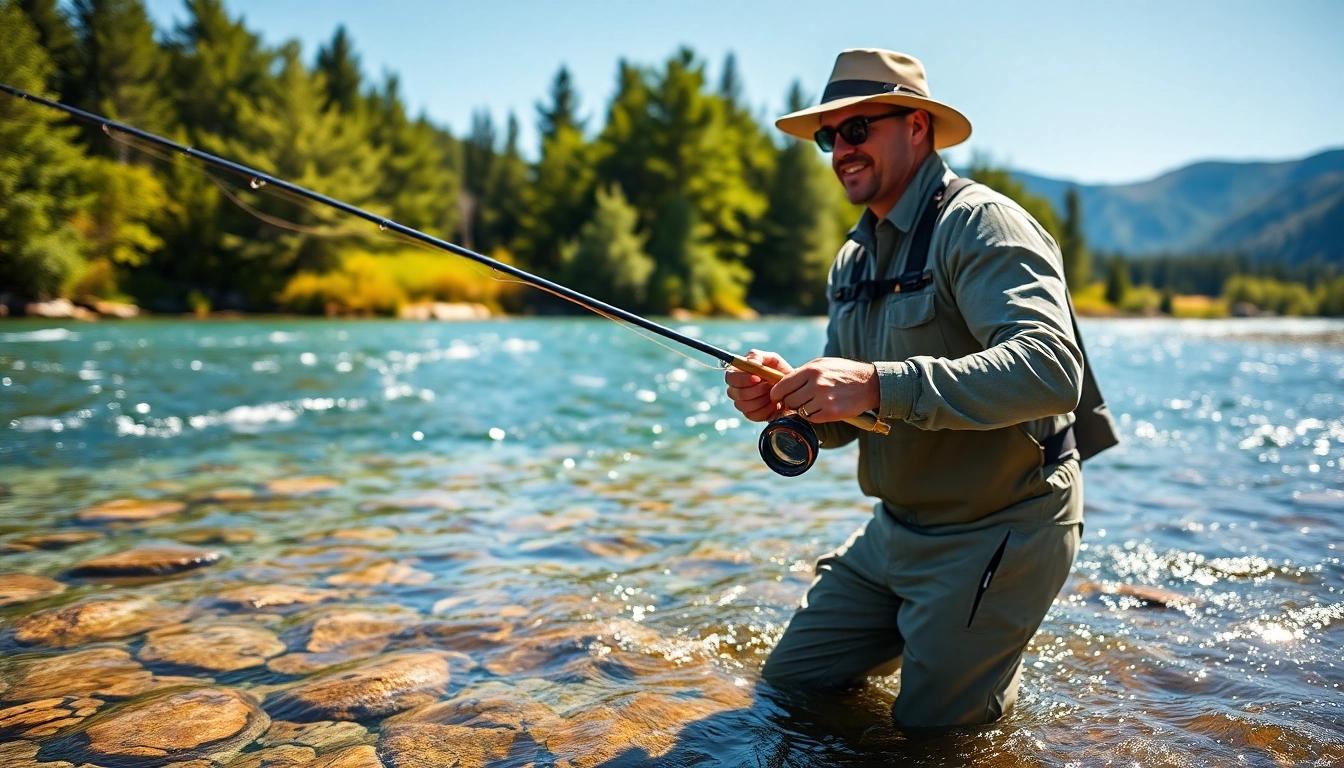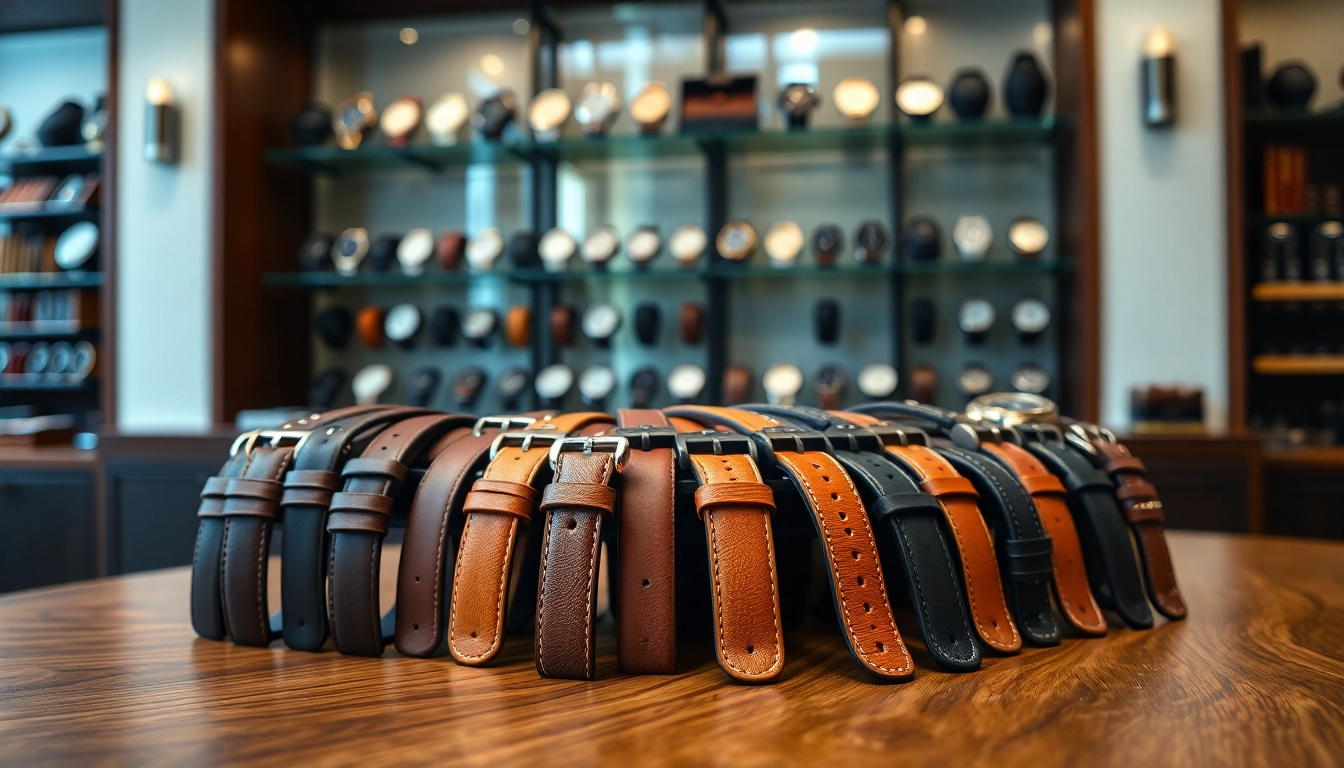Understanding Fly Fishing Apparel
Defining Fly Fishing Apparel
Fly fishing apparel encompasses a wide range of clothing and gear specifically designed to enhance the comfort, performance, and safety of anglers during their fishing adventures. This includes items like shirts, pants, jackets, and accessories that cater not only to functional needs but also to personal style. As the popularity of fly fishing continues to grow, so too does the importance of selecting the right apparel to ensure an enjoyable experience on the water.
With the right Fly fishing apparel, anglers can better navigate diverse environments and weather conditions, from warm sunny days to chilly, rainy outings. The apparel used by fly fishermen is tailored specifically to meet the unique demands of the activity, setting it apart from standard outdoor clothing.
Importance of Materials in Fly Fishing Apparel
Materials used in fly fishing apparel play a vital role in its effectiveness. Typically made from synthetic fabrics like polyester, nylon, or specialized blends, these materials are engineered for specific functions. Key considerations include:
- Quick Drying: Fabrics that wick moisture away from the body and dry quickly keep anglers comfortable and minimize weight when wet.
- Breathability: High breathability helps regulate temperature, allowing for comfort in varying weather conditions.
- Durability: The right materials withstand the rigors of fishing environments, including abrasion from sharp rocks, thorns, and harsh elements.
- UPF Protection: UV-resistant fabrics protect against sun exposure, reducing the risk of sunburn and skin damage.
Benefits of Specialized Designs
Specialized designs in fly fishing apparel not only provide enhanced functionality but also improve overall performance during fishing activities. Some key benefits include:
- Ergonomic Fit: Apparel engineered for a comfortable fit allows freedom of movement when casting or wading through water.
- Pockets and Storage: Strategically placed pockets provide convenient storage for essential items like tools, flies, and snacks.
- Layering Capabilities: Many fly fishing garments are designed to be layered, providing versatility for changing temperatures and conditions.
Essential Elements of Fly Fishing Apparel
Sun Protection and UV Resistance
One of the primary concerns for fly anglers is prolonged sun exposure. UV radiation can lead to serious health issues, including skin cancer. Select apparel that provides adequate protection is essential. Look for clothing with UPF ratings, as these garments are specifically designed to block UV rays effectively. Lightweight long-sleeve shirts and wide-brimmed hats work together to cover exposed skin, while breathable fabrics prevent overheating.
Water Resistance and Breathability
Weather is unpredictable, especially when you’re outdoors, making water resistance a significant factor in fishing apparel. Although anglers may expect to get wet from splashes or spills, clothing should be designed to resist full saturation. Water-resistant or waterproof jackets, pants, and waders are crucial for staying dry.
However, breathability must not be sacrificed for water resistance. Many modern fabrics incorporate advanced technology that allows moisture to escape while keeping water out. This balance is essential for comfort during long hours of fishing.
Layering Techniques for Different Conditions
Layering is an essential technique in fly fishing apparel that allows anglers to adapt to changing weather conditions. The three-layer system consists of:
- Base Layer: Worn closest to the skin, the base layer manages moisture and regulates body temperature.
- Mid Layer: This layer provides insulation and warmth, crucial for cool mornings or evenings.
- Outer Layer: The final layer protects against wind, rain, and other elements, keeping you dry and comfortable.
Top Considerations When Selecting Fly Fishing Apparel
Fit and Comfort during Activities
Comfort is paramount when it comes to apparel for active pursuits like fly fishing. Consider a fit that allows for ease of movement without being too loose or restrictive. Proper sizing ensures mobility when casting, maneuvering through water, or wading. Moreover, check for features like stretchy panels, underarm vents, or articulated designs that enhance mobility.
Durability for Long-Term Use
When investing in fly fishing apparel, prioritize durability. Look for reinforced seams, abrasion-resistant fabrics, and materials designed to withstand wear and tear. This ensures that your clothing can endure harsh environments and last for multiple seasons, providing long-term value.
Style vs. Functionality Debate
While functionality should be a top priority, many anglers also appreciate style in their apparel. This presents a balance between aesthetic appeal and practical utility. Generally, brands are increasingly focused on producing apparel that looks good without compromising functionality. Choose apparel that reflects personal taste but does not sacrifice quality features necessary for effective fly fishing.
Care and Maintenance of Fly Fishing Apparel
Cleaning Techniques to Enhance Longevity
Proper maintenance ensures that fly fishing apparel performs well over time. Always refer to care instructions provided by the manufacturer. Use mild, biodegradable detergents designed for technical fabrics. Avoid fabric softeners and bleach that can damage materials. Washing gear in cold water and air-drying is preferable to preserve specialized coatings and functionality.
Storage Recommendations for Seasonal Use
Proper storage is necessary to prolong the life of fly fishing apparel. Clean and dry garments before packing them away for the season. Store clothing in a cool, dark place, ideally in breathable garment bags or containers that deter moisture and pests. Avoid storing items in overly warm or humid spaces, as these conditions can lead to fabric deterioration or mold growth.
Recognizing Signs of Wear
Being vigilant about wear and tear is vital for maintaining the integrity of fly fishing apparel. Check for signs of fading, fraying seams, or water resistance failure. Address repairs promptly—stitch small tears, reapply waterproofing treatments, and replace damaged zippers to prolong the life of the apparel.
Innovations in Fly Fishing Apparel Technology
Emerging Fabrics and Performance Enhancements
The field of fly fishing apparel is constantly evolving, with innovative materials making their debut regularly. Fabrics with built-in technology for moisture management, thermal regulation, and UV protection provide anglers with superior performance. Stretchable fabrics, lightweight materials, and advanced breathability paired with waterproof features take comfort and functionality to new levels.
Ecologically Friendly Options in Fly Fishing Apparel
As environmental awareness grows, so does the demand for eco-friendly fly fishing apparel. Many brands are now producing garments from recycled materials or employing sustainable practices in manufacturing. Look for certifications like Global Organic Textile Standard (GOTS) or OEKO-TEX to ensure the apparel meets ecological standards. By choosing eco-conscious apparel, anglers can enjoy their sport while minimizing their environmental impact.
Consumer Trends and Future Directions
The future of fly fishing apparel is exciting, with technology continually shaping the landscape. As consumer preferences shift toward personalization, brands are likely to offer more customizable options. Additionally, the integration of smart technology—such as clothing that monitors body temperature or tracks performance data—may soon be part of the fly fishing experience, enhancing safety and comfort on the water.



